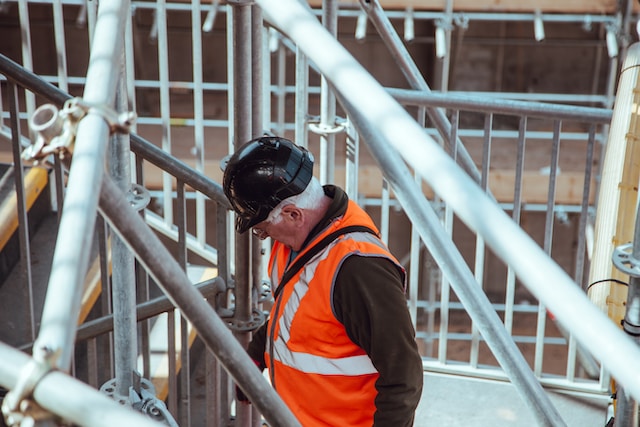Construction sites are bustling hubs of activity, where skilled professionals come together to transform architectural visions into tangible structures. Amidst the hustle and bustle, ensuring safety on a construction site becomes paramount. Every construction project involves a multitude of tasks, heavy machinery, and potential hazards. However, with meticulous planning and the incorporation of well-thought-out details, construction site safety can be significantly enhanced.
In this comprehensive guide, we will delve into various aspects that contribute to a safer construction environment, highlighting the significance of tube clamps in particular.
Planning and Risk Assessment: Laying the Foundation for Safety
Before any construction activity commences, a thorough planning phase is essential. This phase involves evaluating the scope of work, identifying potential hazards, and devising strategies to mitigate risks. Conducting a comprehensive risk assessment allows construction teams to anticipate challenges and put in place measures to prevent accidents. The planning stage also involves determining the appropriate safety equipment and gear required for the specific project.
Effective Training and Skill Development
A well-trained workforce is at the heart of a safe construction site. Providing proper training equips workers with the knowledge and skills they need to navigate potential hazards and operate machinery safely. Regular training sessions not only refresh workers’ understanding of safety protocols but also introduce them to new industry standards and best practices. Additionally, ongoing skill development ensures that workers remain adept at using the latest tools and techniques.
Harnessing the Power of Technology
In today’s digital age, technology plays a pivotal role in enhancing construction site safety. Drones, for instance, can be used to conduct aerial surveys and inspections, eliminating the need for workers to access high-risk areas. Building Information Modeling (BIM) software enables precise planning and visualization of construction processes, minimizing errors and rework. Furthermore, wearable technology such as smart helmets and vests with integrated sensors can alert workers and supervisors about potential dangers, thereby preventing accidents.
The Crucial Role of Personal Protective Equipment (PPE)
Personal Protective Equipment, or PPE, forms a vital line of defense against construction site hazards. Properly fitted hard hats, high-visibility clothing, gloves, and steel-toed boots are just a few examples of essential PPE. Respirators and eye protection are crucial for environments with dust, chemicals, and flying debris. By ensuring that workers are equipped with the appropriate PPE, construction companies demonstrate their commitment to safeguarding their employees’ well-being.
Enhancing Structural Safety Through Tube Clamps
These versatile fixtures play a crucial role in securing pipes, tubes, and other cylindrical structures. Nowadays, tube clamps are widely used and popular components in construction projects, contributing significantly to structural safety. Their sturdy design and reliable grip make them invaluable for creating stable frameworks for scaffolding, handrails, guardrails, and more. Tube clamps offer a non-permanent solution, allowing for easy adjustments and modifications as construction progresses.
The Ingenious Design of Tube Clamps
One of the remarkable features of tube clamps is their ingenious design. These clamps are typically composed of two halves that are bolted together, creating a secure grip around the tube. The inner surface of the clamp is lined with ridges or grooves, ensuring a tight hold without damaging the tube’s surface. This design not only provides stability but also allows for the distribution of forces along the length of the tube, enhancing overall structural integrity.
Applications of Tube Clamps in Construction Safety
Tube clamps find applications in various construction safety measures, making them an indispensable part of the toolkit. One prominent use is in the creation of temporary guardrails and handrails. By securely fastening tubes using clamps, construction teams can establish safe walkways and working platforms at heights, preventing falls and providing stability for workers. Additionally, tube clamps are utilized in creating barriers and fencing around hazardous areas, ensuring that unauthorized personnel are kept at a safe distance.
Easy Assembly and Adaptability
Another advantage of tube clamps is their ease of assembly. Unlike welding or other permanent methods, tube clamps can be quickly installed and adjusted as needed. This flexibility is particularly valuable in construction environments where changes and modifications are frequent. Whether it’s repositioning a safety barrier or altering the layout of scaffolding, tube clamps allow for efficient adaptations without compromising on safety.
Maintenance and Inspection of Tube Clamps
To ensure the continued safety and reliability of tube clamps, regular maintenance and inspection are crucial. Construction site supervisors should implement a routine inspection schedule to assess the condition of clamps, checking for any signs of wear, corrosion, or damage. Replacing worn or damaged clamps promptly is essential to prevent structural instability and accidents. By prioritizing the upkeep of tube clamps, construction companies contribute to a safer work environment.
Cultivating a Culture of Safety
Cultivating a culture of safety within a construction site is a powerful endeavor that transcends mere compliance with regulations; it embodies a collective commitment to protecting lives and promoting well-being. This culture is nurtured when safety becomes an intrinsic value, deeply embedded in the mindset of every individual, from the laborer to the project manager.
It’s about fostering an environment where safety isn’t just a set of rules but a way of thinking and acting. Open lines of communication, regular safety briefings, and training sessions serve as the cornerstones of this culture, enabling workers to voice concerns, share insights, and learn from each other’s experiences. A strong safety culture instills a sense of responsibility that extends beyond personal safety to the safety of one’s colleagues, and even the community at large.
As construction professionals internalize safety practices and lead by example, a ripple effect is created, influencing attitudes, behaviors, and decisions. Through this collective effort, a culture of safety takes root, ensuring that each person steps onto the construction site with a shared dedication to returning home safely at the end of the day.
By incorporating meticulous planning, effective training, technology-driven solutions, and reliable equipment like tube clamps, construction companies can elevate their safety standards. Tube clamps, with their versatile applications and sturdy design, play a pivotal role in creating stable structures and safeguarding workers. As the industry continues to evolve, the commitment to safety remains paramount, ensuring that construction sites not only bring architectural visions to life but also protect the well-being of those who build them.







